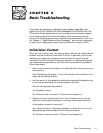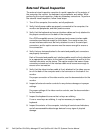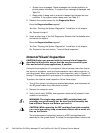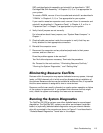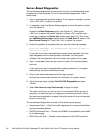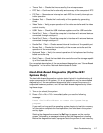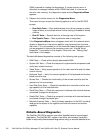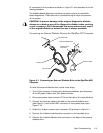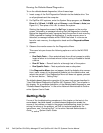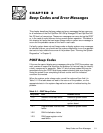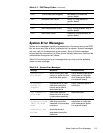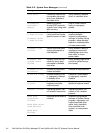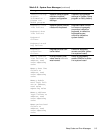
2-8
'HOO2SWL3OH[*;*;S0DQDJHG3&DQG2SWL3OH[1;1HW3&6\VWHPV6HUYLFH0DQXDO
(RAM) required for loading the diagnostics. If a main memory error is
detected, a message indicates which DIMM has failed. If no errors are
found in main memory, the diagnostics loads and the Diagnostics Menu
appears.
3. Observe the monitor screen for the Diagnostics Menu.
This menu lets you choose the following options or exit to the MS-DOS
prompt:
Run Quick Tests — Runs selected tests from all test groups to quickly
locate a failure or to indicate where further testing is needed to isolate
a failure
Run All Tests — Runs all tests for a thorough test of the system
Run Specific Tests — Tests a particular area or subsystem
If the Diagnostics Menu does not appear, check with the network admin-
istrator to determine if the service partition was removed from the hard-
disk drive.
If it is not possible to run the hard-disk–based diagnostics and if
you are prepared to remove the computer cover, see “Internal Visual
Inspection” found earlier in this chapter. Otherwise, see “Getting Help”
found later in this chapter.
The hard-disk–based diagnostics consists of the following test groups:
RAM Tests — Check all the directly addressable RAM
System Set Tests — Check the computer’s system board components and
verify their related functions
Video Tests — Verify proper operation of the video controller and the video
control circuitry
Keyboard Tests — Verify the correct operation of the keyboard and the key-
board controller chip
Mouse Test — Checks the functionality of the mouse controller and the
operation of the mouse keys
Hard-Disk Drive Tests — Check the hard-disk drive controller and the stor-
age capability of the hard-disk drive
Serial Ports Tests — Check the computer’s interface with external devices
connected through the serial ports
Parallel Port Tests — Check the computer’s interface with external devices
connected through the parallel port
Network Interface Tests — Verify the basic operation of the NIC, including
read and write access to its registers and internal transmit and receive
capability
'LVNHWWH%DVHG'LDJQRVWLFV
The OptiPlex GX1/GX1p systems use either diskette-based or server-based
diagnostics. The OptiPlex NX1 systems use either server-based, hard-disk–
based or optionally diskette-based diagnostics using an external diskette-drive




